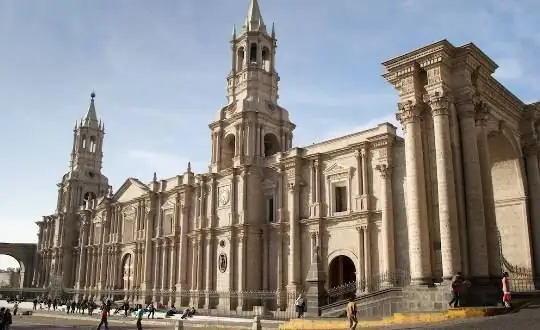
Description of the attraction
Arequipa Cathedral is one of the earliest religious buildings in the city. The first church building was built in 1544 by the architect Peter Godines under the patronage of the Bishop of Cusco, Don Frei Vicente de Velarde. In 1583, an earthquake destroyed the temple. In 1590 the church building was restored, but not for long. In 1600, due to the eruption of the Huaynaputina volcano, the temple was partially destroyed again. In the early 17th century, Pope Paul V established the diocese of Arequipa, and a cathedral was built on the site of the old church from 1621 to 1656. After a severe fire in 1844, the building of the cathedral was restored according to the project of the architect Lucas Poblete and with the support of Bishop José Sebastian de Goyenes and Barred in 1868.
In June 2001, the city of Arequipa was damaged by an earthquake of magnitude 8.1 on the Richter scale. One tower of the cathedral was completely destroyed, the nave, vaults and the second tower were badly damaged. A year later, on its anniversary, the cathedral was completely restored under the leadership of Juan Manuel Guillen.
The cathedral is built of treated volcanic stone and brick in the neo-Renaissance style with a slight Gothic influence. The city's main temple is on the north side of the Plaza de Armas in the historic center of Arequipa. Its façade consists of seventy columns with Corinthian capitals, three doors and two large side arches.
The altar of the temple is made of Carrara marble by Felipe Maratillo. The unique lectern is carved out of oak by the French artist Boucinet Rigaud from Lille. The museum of the cathedral contains precious works of art made in Spain by the artist-jeweler Francisco Maratillo, the silver crown of Elizabeth II and many other artifacts donated to the cathedral by Bishop Goyenes and his family.






